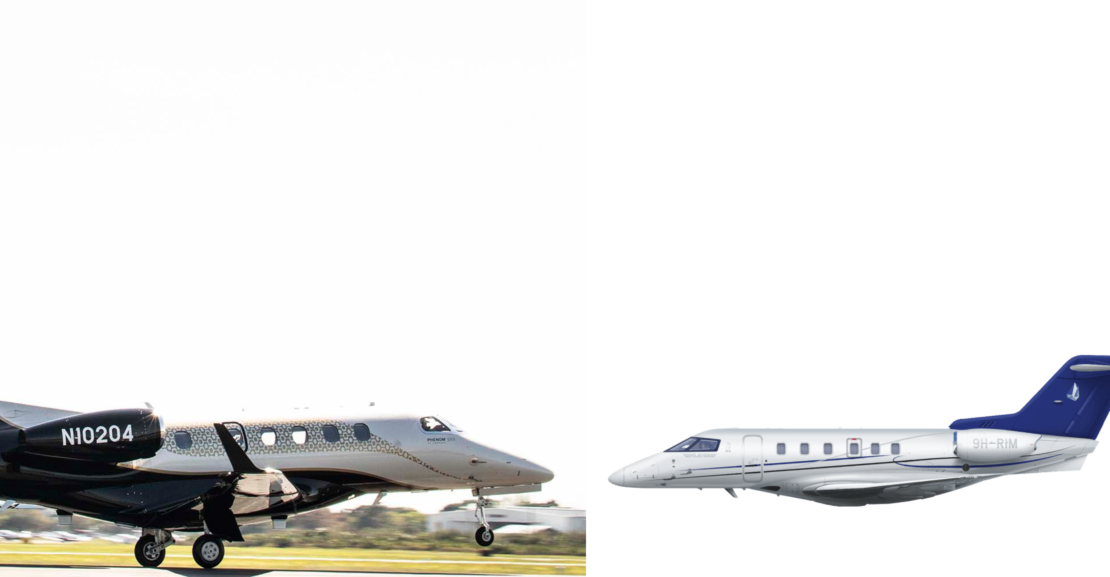Private jets have become increasingly popular in recent years. Luxury, comfort, and convenience are the major reasons why people opt for private aviation. However, choosing the right private jet can be a daunting task, especially for first-time buyers. In this blog post, we will compare two popular private jets: Embraer Phenom 300E and Pilatus PC-24, and help you make an informed decision.
-
- Performance and Specifications
The Embraer Phenom 300E is one of the most successful light jets on the market. It has a range of 2,010 nautical miles, which is enough to fly non-stop from New York to Miami. Moreover, it can fly at a maximum altitude of 45,000 feet, making it one of the highest flying light jets. The aircraft can carry up to 10 passengers and has a maximum speed of 464 knots or 535 mph.
Additional Read : Cessna Citation II Encore Vs Embraer Phenom 300 – Which Light Private Jet is Right for You?
On the other hand, the Pilatus PC-24 is a versatile jet that can operate from short runways, making it ideal for accessing remote destinations. It has a range of 2,040 nautical miles and can fly at a maximum speed of 440 knots or 507 mph. The PC-24 can carry up to 11 passengers, and it has a maximum altitude of 45,000 feet.
-
- Interior and Comfort
The Embraer Phenom 300E has a spacious cabin and can accommodate up to 10 passengers comfortably. The cabin has a height of 4.9 feet and a width of 5.1 feet, which provides ample head and shoulder room. Moreover, the seats are fully adjustable, allowing passengers to recline and stretch out during long flights. An advanced soundproofing system also ensures that the cabin is quiet enough for passengers to have conversations or sleep.
The Pilatus PC-24 also has a spacious cabin that can accommodate up to 11 passengers. The cabin has a height of 5.1 feet and a width of 5.7 feet, making it one of the largest light jets. The seats are fully adjustable and can recline for added comfort. The cabin is also equipped with a climate control system that ensures the temperature is just right for passengers.
-
- Technology and Safety Features
The Embraer Phenom 300E is equipped with the latest technology, including a touchscreen-controlled avionics system, which reduces pilot workload and enhances safety. Moreover, it has a unique airframe design that improves efficiency and reduces drag, resulting in reduced fuel consumption and lower operating costs. The aircraft also comes with a comprehensive warranty that covers maintenance and repair costs.
The Pilatus PC-24 also features advanced technology, including an intuitive avionics system that simplifies flying. It has a state-of-the-art autopilot system that makes the aircraft easy to fly, even for inexperienced pilots. The PC-24 also comes with a remarkable safety feature, the Emergency Descent Mode, which automatically brings the aircraft down to a lower altitude in case of cabin depressurization.
-
- Price
The Embraer Phenom 300E has a purchase price of approximately $10 million. Its operating costs are also relatively low compared to other light jets, which makes it an affordable option for private jet buyers. Moreover, the aircraft has a high resale value, which means that owners can recoup a significant percentage of their investment if they decide to sell.
The Pilatus PC-24 has a purchase price of approximately $10.4 million. Its operating costs are higher compared to the Phenom 300E, primarily due to its specialized landing gear, which requires more maintenance. However, the PC-24 has a higher resale value than the Phenom, which means that owners can recoup a larger portion of their investment if they decide to sell.
In conclusion, both the Embraer Phenom 300E and Pilatus PC-24 are excellent private jets that offer luxury, comfort, and convenience. Choosing between these two aircraft comes down to your specific needs and requirements. If you prioritize range and lower operating costs, the Phenom 300E is the best option. However, if you need a versatile aircraft that can access short runways, the PC-24 is the way to go. Ultimately, your decision should be guided by your budget, destination, and travel preferences.

